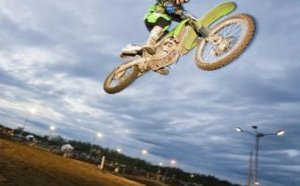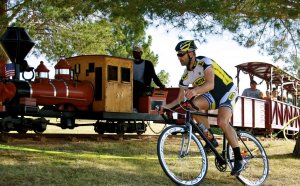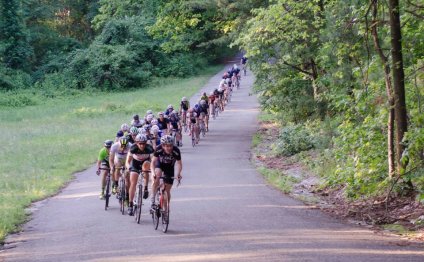
History of Bicycle Racing
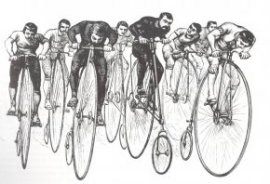 The Foundations of Bicycle Racing plus the Golden age the
The Foundations of Bicycle Racing plus the Golden age the
Rushing Bicycle
The game of bicycle race
has been in existence because the
earliest days of the
velocipedes of the 19th
century.
Following development regarding the high-wheeled
“ordinaries” bike rushing became an extremely
well-known, yet rather dangerous activity. These
difficult rounds with hard rubber tires and
a brake in title just needed considerable
nerve to drive and offered rise towards term
“breakneck rate” since a collision often lead
when you look at the driver getting pitched over the front of
the wheel, frequently with devastating outcomes. The
desire for even greater speed triggered ever
larger wheel diameters considering that the only way to
obtain the period going faster would be to boost the
measurements of the driving-wheel
With front rims reaching 60 inches in diameter and
beyond, a research a safer design resulted in the growth
for the bicycle known as the “safety” which had both
rims of equal size. The creation and growth of
the pneumatic tire had been a significant development in
bicycle rushing while the very first recorded race making use of pneumatic
tires happened in 1889. Security bicycle design, pneumatic
tires, together with concept of gearing combined to carry
bike racing to a new amount of competitors, and soon
these bicycles racing on banked wooden tracks became
the impression associated with the sporting world.
Expert bike rushing
in velodromes was an
greatly well-known
spectator sport within the
United states of america with racers
like Arthur Zimmerman
and Marshall “Major”
Taylor receiving the
accolades awarded to
stars, their particular recreation of
bicycle rushing almost
the national sport of
US
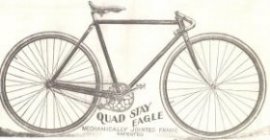
Track rushing prospered in Europe too.
In 1881 a brand new kind of track rushing
originated from The United Kingdomt – Six-day Rushing –
in which racers rode ordinaries
continually around a cinder track for
six times or until exhaustion overtook all of them.
The grueling event was quickly abandoned
in England but ended up being rapidly adopted in
America in which six-day rushing was
enthusiastically embraced in venues like
New York’s Madison Square Outdoors. In
1899 the solitary driver competition was
banned for humanitarian explanations but
proceeded with two man teams rushing
around the clock for six days
In European countries, track race had been well-known, however it was roadway racing that grabbed the imagination of the people. Long
distance events from town to town such as the 355 mile (572 km) competition from Bordeaux to Paris, or perhaps the punishing 795
mile (1280 kilometer) battle from Paris to Brest and returning to Paris had been contested prior to the turn associated with the last century.
Various other races that started then, including Paris-Roubaix and Liege-Bastogne-Liege, are still being held even today,
however it was at 1903 that the “race to finish all races” was created, the epic Tour de France
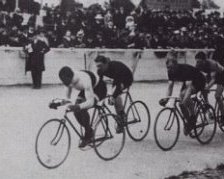
A Belgian group assembles before
the start of the 1925
Paris-Roubaix
Frames of prewar rushing bikes were made of lightweight butted tubing making use of lugged building. Wheel
wheels had been made from wood and were very durable given the harsh road conditions experienced, but
aluminum wheels became the standard for road racing by 1937. Derailleurs, though created around the
1900's, were seldom used in road rushing competitors. The competitors believed derailleurs had been unreliable and
created extortionate drag, and are not even permitted to be used into the journey de France until 1937. Several equipment
ratios were utilized nonetheless. With around three gear cogs regarding rear freewheel, a gear change could be impacted by
dismounting the bike, loosening the wingnuts, sliding the rear wheel within the frame dropout to discharge the chain
stress, putting the string regarding the brand new cog, repositioning a corner wheel to get appropriate
chain tension, recalling to retighten the wingnuts before remounting once more.
The Belgian racer Romain
Maes with Georges
Speicher in the very beginning of the
1935 Journey de France. Maes
led the journey from start to
finish. 1933 TdF champion
Speicher finished 6th
overall.
Maes with Gabriel
Ruozzi using a moment
to talk at the start of a
phase in 1935 Tour de
France. The era of
derailleurless bikes in
professional road rushing
ended up being coming to an-end.
Using their many racing victories
to promote their particular line of bicycles,
Automoto proudly shows their
competition bike, 'model Tour de
France' alongside the greater
"pedestrian" models.
Roger Lapebie,
champion of 1937
Tour de France,
leading the
peloton.This ended up being the
very first 12 months derailleurs
had been permitted within the
TdF while the average
overall rate the
Tour increased
considerably.
Lapebie's 1937 journey de France winnings,
along with Eloi Meulenberg's 1937
World Championship title using
Super Champion derailleurs signaled
a new age for the rushing bike.
In The united kingdomt, "massed start" events on
available roads had been prohibited in support of
individual time studies, where one
rider at a time set off to accomplish the
course up against the time clock. Time trial
bikes were often fixed equipment bicycles,
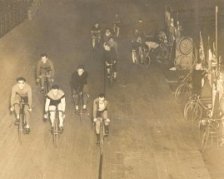
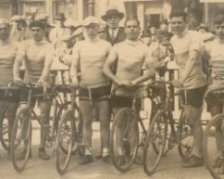
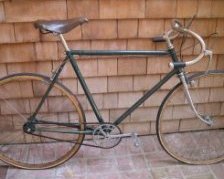
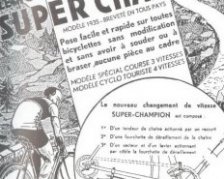
YOU MIGHT ALSO LIKE
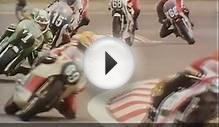

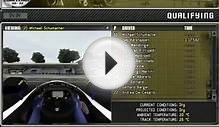
Share this Post
Related posts
History of BMX Bikes
Late 19th century At the end of the 19th century, the bicycle became a well known kind of exercise and transportation. Acrobatic…
Read MoreArizona Bicycle Racing
What is the Arizona Bike Center? The Arizona bike Center is a multi-use facility which encompasses an education center, security…
Read More
